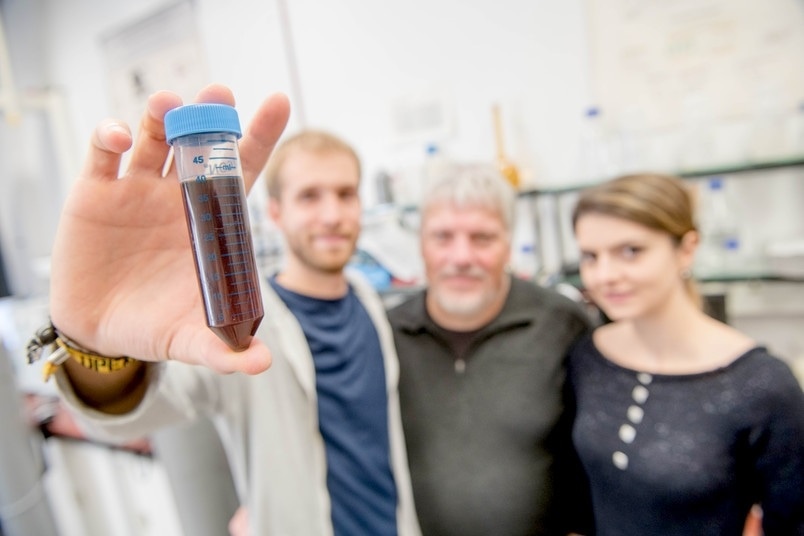Nov 9 2018
Certain structural properties of natural enzymes ensure specifically high catalytic activity. Now, an international group of researchers has transferred the structural properties of these enzymes to metallic nanoparticles.
 Researchers have given these metal particles in solution a special property. (Image credit: RUB, Marquard)
Researchers have given these metal particles in solution a special property. (Image credit: RUB, Marquard)
As usual, the required chemical reaction thus did not occur at the particle surface but instead occurred in channels within the metal particles and that too with a catalytic activity that was three times higher.
A research team from Ruhr-Universität Bochum, Germany, and the University of New South Wales, Australia, has reported about these nanozymes in the Journal of the American Chemical Society, which was published online on September 23rd, 2018.
Active centers in channels
In enzymes, the active centers are located inside, and this is where the chemical reaction also takes place. To reach the active center, the reacting substances have to travel via a channel from the surrounding solution. At this active center, the spatial structure offers specifically conducive reaction conditions.
It is assumed, for example, that a locally altered pH value prevails in the channels and that the electronic environment in the active centres is also responsible for the efficiency of natural enzymes.
Wolfgang Schuhmann, Professor, Bochum Center for Electrochemical Sciences.
Channels produced in nickel-platinum particles
To artificially mimic the structures of the enzymes, the researchers developed particles of platinum and nickel that measured approximately 10 nm in diameter. They subsequently removed the nickel through chemical etching, which led to the formation of channels. In the last step, the active centers on the particle surface were deactivated by the researchers.
This enabled us to ensure that only the active centres in the channels participated in the reaction.
Patrick Wilde, Doctoral Candidate, Bochum Center for Electrochemical Sciences.
Next, the team evaluated the catalytic activity of the particles developed in this manner against the catalytic activity of traditional particles that have active centers on the surface.
Three times greater activity
For the test, oxygen reduction reaction was used, which forms the basis of fuel cell operation, among other things. Compared to active centers on the particle surface, active centers at the end of the channels were observed to catalyze the chemical reaction three times more efficiently.
The results show the enormous potential of nanozymes.
Dr Corina Andronescu, Group Leader, Bochum Center for Electrochemical Sciences.
The team now intends to extend this idea to other kinds of reactions, for example, electrocatalytic reduction of CO2, and also study the principles of elevated activity in more detail.
We would like to be able to imitate the way enzymes work even better in the future. Ultimately, we hope that the concept will contribute to industrial applications in order to make energy conversion processes more efficient using electricity generated from renewable sources.
Wolfgang Schuhmann, Professor, Bochum Center for Electrochemical Sciences.